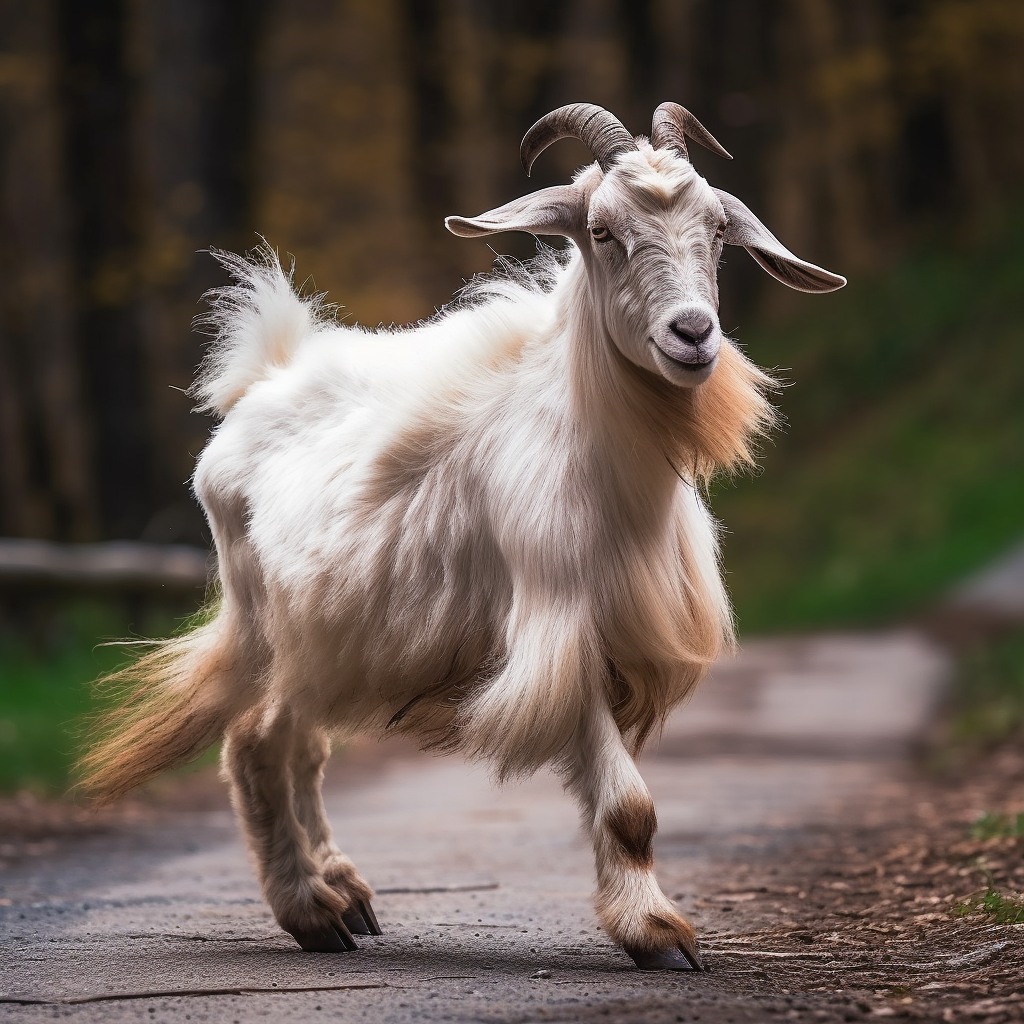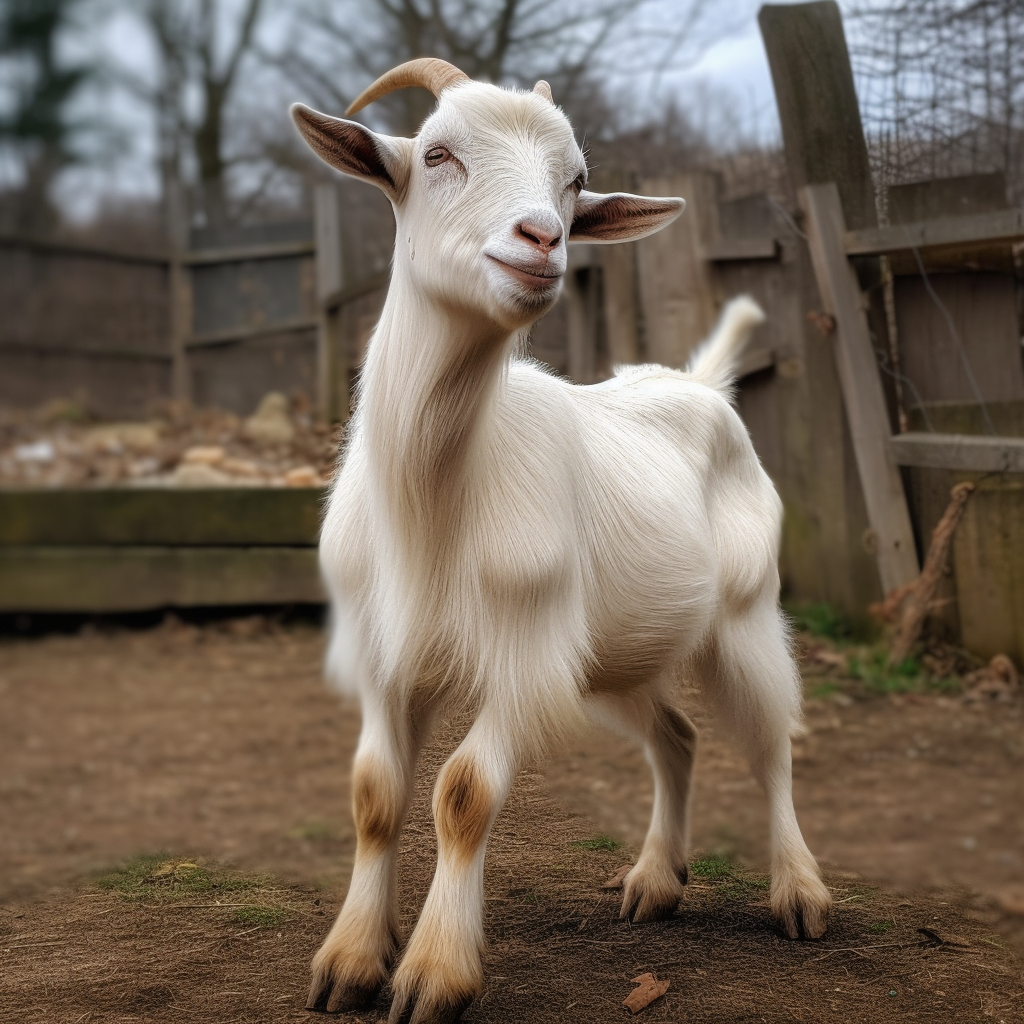Have you ever wondered why do goats wag their tails? These fascinating creatures known for their quirky behaviors and unique mannerisms, often leave people intrigued by this particular habit. While tail flicking is typically associated with dogs and their expression of happiness, it serves a different purpose for goats.
In this article, we will delve into the reasons behind why goats wag their rump and uncover the significance of this behavior. By gaining an understanding of the motives behind this intriguing behavior, we can gain valuable insights into how goats communicate and engage with each other socially. So, if you’ve ever been curious about this peculiar aspect of goat behavior, keep reading to find out more!
Why Do Goats Wag Their Tails?

Natural Behavior
First and foremost, tail wagging in goats is considered a natural behavior. It is instinctual for goats to move their rumps in various ways, and this motion is influenced by different factors. By observing a goat’s dock, you can gain valuable information about its current state and intentions.
Communication
Why Do Goats Wag Their Tails? Tail wagging is an important form of communication among them. This ability enables them to communicate their feelings and desires to other capra within their group. Their possess a complex social structure, and docks’ flicking plays a role in maintaining order and facilitating interactions.
Why Do Goat Babies Wag Their Tails?
Playfulness & Happiness
Kids often wag their rumps as a sign of playfulness. Just like human children, they are full of energy and curiosity, and tail wagging is one of the ways they express their joy and enthusiasm. It’s a delightful sight to see kids frolicking around, flicking their docks in sheer delight.
Tail wagging in Goats-kids is also a sign of happiness. When they are content and comfortable in their environment, their rumps will often wag in a relaxed and rhythmic manner. It’s a testament to their well-being and the positive experiences they are having.
Why Do Adult Goats keep Wagging Their Tails?

Hormonal Changes
Doe may wag their docks more frequently during certain periods of their reproductive cycle. Hormonal changes can influence their behavior, including tail wagging. It can be a way for them to signal their fertility to potential mates or assert dominance within the herd.
Attracting Mates
Why Do Goats Wag Their Tails? Tail-wagging in doe can serve as a form of courtship behavior. By fluttering their rumps, they can attract the attention of does, or bucks, and indicate their readiness to mate. The dock’s movement and position can convey important information about its reproductive status.
Wagging Tails – A Way of Communication
Tail Positions and Meanings
Why Do Goats Wag Their Tails? The position of a goat’s dock can reveal valuable information about its intentions and emotions. Understanding the different tail positions and their meanings can help decipher the messages goats convey through their flicking docks.
1. Graceful Elevation: Upright Tail Posture
When a goat holds its tail upright and stiff, it often indicates a sense of alertness or attentiveness. This position is commonly observed when a goat senses a potential threat or is in an unfamiliar environment. It serves as a visual signal to other animals like a goat that they should also be cautious and vigilant.
2. Relaxed Drape: Hanging Tail Position
On the other hand, when a goat’s rump is relaxed and hanging down naturally, it typically suggests a state of calmness and contentment. This position is common when goats are at ease and feel secure in their surroundings. It signifies that they are comfortable and free from stress or anxiety.
3. Submissive Retreat: Tail Tucked Between Legs
In some instances, Some goat may tuck their rumps between their hind legs. This behavior usually signifies fear, submission, or a sense of vulnerability. When a goat assumes this tail position, it is conveying a message of submissiveness to other animals or potential threats. It’s a way of saying, “I am not a threat, and I acknowledge your dominance.”
Additionally, animals may wag their tails rapidly from side to side. This wagging motion can indicate excitement, anticipation, or a heightened level of energy. You may observe this behavior during playtime or when animals are anticipating food or treats. It’s their way of expressing enthusiasm and anticipation.
Conclusion
To summarize, the wagging of rumps in goats plays a crucial role in their communication and expression. From their natural behavior to their social interactions, they utilize their tails to convey messages to their herd mates and even potential mates. Whether it’s the playfulness of kids or the hormonal changes in does, dock wagging holds significance in the goat world.
By understanding the various rump positions and their meanings, we can gain insights into a goat’s emotional state, intentions, and social dynamics. So, the next time you come across a goat fluttering its rump, remember that it’s more than just a random movement—it’s a language in itself.
FAQs (Frequently Asked Questions)
Do all goat breeds wag their tails?
Yes, tail wagging is a common behavior among all goat breeds.
Is tail wagging in goats similar to dogs?
Tail wagging in goats and dogs may appear similar, but they have different meanings and contexts. Dogs primarily wag their tails to express happiness, whereas they use tail wagging for communication and social interaction.
Can tail wagging indicate a health problem in goats?
Tail wagging itself is not indicative of a health problem. However, if a goat exhibits unusual or excessive tail wagging accompanied by other concerning symptoms, it’s advisable to consult a veterinarian.
How can I interpret a goat’s tail movements?
Observing the context, body language and tail positions can help interpret a goat’s tail movements. Tail wagging should be considered in conjunction with other behavioral cues to understand its true meaning.
